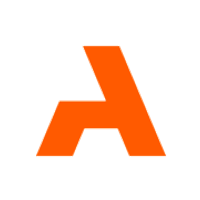
Arcosa Inc
NYSE:ACA


| US |

|
Johnson & Johnson
NYSE:JNJ
|
Pharmaceuticals
|
| US |

|
Berkshire Hathaway Inc
NYSE:BRK.A
|
Financial Services
|
| US |

|
Bank of America Corp
NYSE:BAC
|
Banking
|
| US |

|
Mastercard Inc
NYSE:MA
|
Technology
|
| US |

|
UnitedHealth Group Inc
NYSE:UNH
|
Health Care
|
| US |

|
Exxon Mobil Corp
NYSE:XOM
|
Energy
|
| US |

|
Pfizer Inc
NYSE:PFE
|
Pharmaceuticals
|
| US |

|
Palantir Technologies Inc
NYSE:PLTR
|
Technology
|
| US |

|
Nike Inc
NYSE:NKE
|
Textiles, Apparel & Luxury Goods
|
| US |

|
Visa Inc
NYSE:V
|
Technology
|
| CN |

|
Alibaba Group Holding Ltd
NYSE:BABA
|
Retail
|
| US |

|
3M Co
NYSE:MMM
|
Industrial Conglomerates
|
| US |

|
JPMorgan Chase & Co
NYSE:JPM
|
Banking
|
| US |

|
Coca-Cola Co
NYSE:KO
|
Beverages
|
| US |

|
Walmart Inc
NYSE:WMT
|
Retail
|
| US |

|
Verizon Communications Inc
NYSE:VZ
|
Telecommunication
|
Utilize notes to systematically review your investment decisions. By reflecting on past outcomes, you can discern effective strategies and identify those that underperformed. This continuous feedback loop enables you to adapt and refine your approach, optimizing for future success.
Each note serves as a learning point, offering insights into your decision-making processes. Over time, you'll accumulate a personalized database of knowledge, enhancing your ability to make informed decisions quickly and effectively.
With a comprehensive record of your investment history at your fingertips, you can compare current opportunities against past experiences. This not only bolsters your confidence but also ensures that each decision is grounded in a well-documented rationale.
Do you really want to delete this note?
This action cannot be undone.

| 52 Week Range |
75.78
111.57
|
| Price Target |
|
We'll email you a reminder when the closing price reaches USD.
Choose the stock you wish to monitor with a price alert.

|
Johnson & Johnson
NYSE:JNJ
|
US |

|
Berkshire Hathaway Inc
NYSE:BRK.A
|
US |

|
Bank of America Corp
NYSE:BAC
|
US |

|
Mastercard Inc
NYSE:MA
|
US |

|
UnitedHealth Group Inc
NYSE:UNH
|
US |

|
Exxon Mobil Corp
NYSE:XOM
|
US |

|
Pfizer Inc
NYSE:PFE
|
US |

|
Palantir Technologies Inc
NYSE:PLTR
|
US |

|
Nike Inc
NYSE:NKE
|
US |

|
Visa Inc
NYSE:V
|
US |

|
Alibaba Group Holding Ltd
NYSE:BABA
|
CN |

|
3M Co
NYSE:MMM
|
US |

|
JPMorgan Chase & Co
NYSE:JPM
|
US |

|
Coca-Cola Co
NYSE:KO
|
US |

|
Walmart Inc
NYSE:WMT
|
US |

|
Verizon Communications Inc
NYSE:VZ
|
US |
This alert will be permanently deleted.
 Arcosa Inc
Arcosa Inc
Arcosa Inc
Investor Relations
Arcosa Inc., a relatively young spinoff from its former parent company, Trinity Industries, has quickly carved out its own identity in the industrial landscape since 2018. Headquartered in Dallas, Texas, Arcosa aims to address infrastructure-related needs across various sectors. At its core, the company focuses on three primary segments: Construction Products, Energy Equipment, and Transportation Products. The Construction Products division thrives on supplying aggregates and specialty materials essential for building and maintaining infrastructure like roads, bridges, and waterworks, meeting the insatiable demand for construction and civil engineering projects across North America.
Meanwhile, Arcosa's Energy Equipment and Transportation Products segments provide complementary streams of revenue. Within Energy Equipment, the company manufactures wind towers and equipment crucial for energy exploration, capturing momentum from the renewable energy sector’s growth. Transportation Products, on the other hand, support the movement of diverse goods through the production of barges and rail components, tapping into domestic freight and logistics. Each segment capitalizes on overarching trends such as increased infrastructure spending and green energy initiatives, positioning Arcosa as a versatile participant addressing the pressing demands of modern economies. Through this diversified approach, Arcosa not only mitigates risks but also seizes opportunities arising in ever-evolving, multi-faceted industrial markets.

Arcosa Inc., a relatively young spinoff from its former parent company, Trinity Industries, has quickly carved out its own identity in the industrial landscape since 2018. Headquartered in Dallas, Texas, Arcosa aims to address infrastructure-related needs across various sectors. At its core, the company focuses on three primary segments: Construction Products, Energy Equipment, and Transportation Products. The Construction Products division thrives on supplying aggregates and specialty materials essential for building and maintaining infrastructure like roads, bridges, and waterworks, meeting the insatiable demand for construction and civil engineering projects across North America.
Meanwhile, Arcosa's Energy Equipment and Transportation Products segments provide complementary streams of revenue. Within Energy Equipment, the company manufactures wind towers and equipment crucial for energy exploration, capturing momentum from the renewable energy sector’s growth. Transportation Products, on the other hand, support the movement of diverse goods through the production of barges and rail components, tapping into domestic freight and logistics. Each segment capitalizes on overarching trends such as increased infrastructure spending and green energy initiatives, positioning Arcosa as a versatile participant addressing the pressing demands of modern economies. Through this diversified approach, Arcosa not only mitigates risks but also seizes opportunities arising in ever-evolving, multi-faceted industrial markets.





























 You don't have any saved screeners yet
You don't have any saved screeners yet
